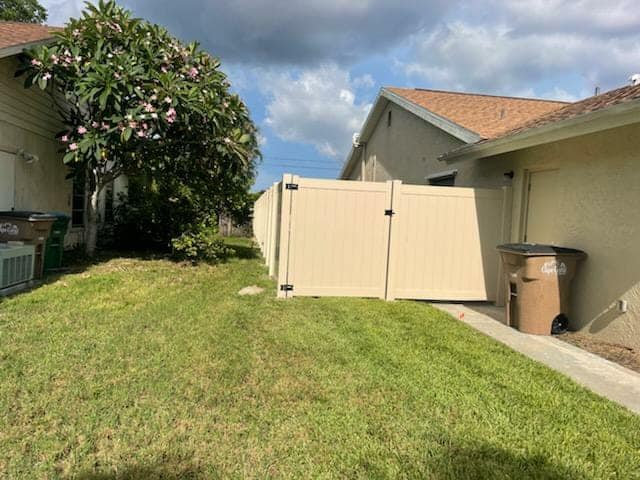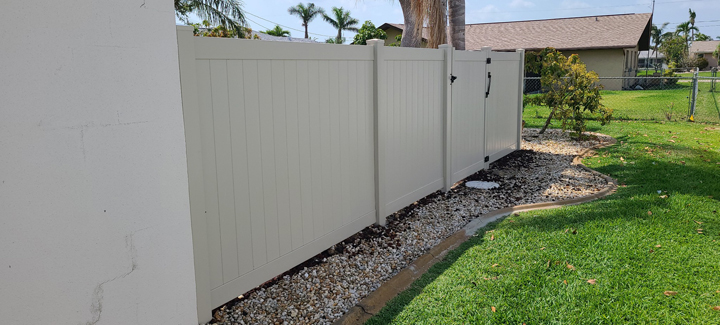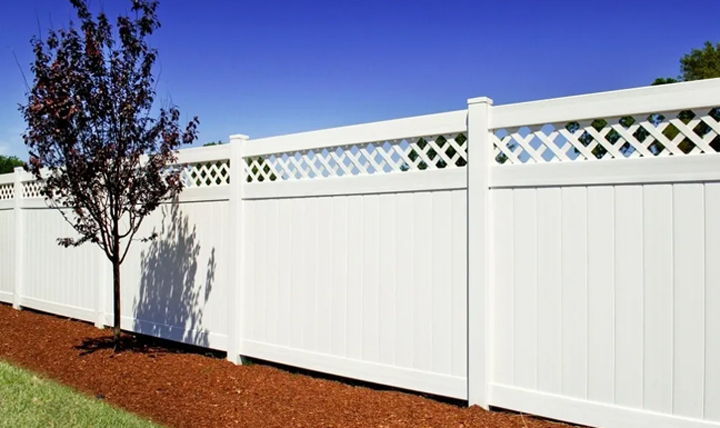Ever find yourself stuck in a heated debate with your neighbor about who should get…

Do I have to give my Neighbour the good side of the fence?
Do you have to give your neighbor the good side of the fence? Is it fair to have a side that’s more presentable? Don’t worry, we’ll help you decide!
You’ll learn about your rights and responsibilities when it comes to fencing in this guide. We’ll also discuss ways to resolve disputes regarding fence ownership and maintenance. So, keep reading if you want to know how to deal with this tricky situation!
Who has the bad side of the fence?
When it comes to fence ownership, it’s important to know who has the responsibility for maintenance and repair. The question then arises, who possesses the unpleasant and less aesthetically pleasing side of the fence that is often referred to as “the bad side of the fence”? This common fencing issue can create confusion between neighbors.
Traditionally, the person who installs and pays for a new fence has the right to choose which side faces their property. It is essential to discuss such matters with your neighbor so everyone involved understands where they stand. However, if you are in disagreement about what constitutes “the good side”, this conversation may become difficult.
It’s also beneficial to research and understand local fencing laws, while generally following guidelines for constructing new fences placed by Homeowner Associations or City Ordinances.
Historically, “the good neighbor” was always understood to refrain from imposing on their neighbor’s property and kept their yards clean together. Unfortunately, this aspect of neighborliness may no longer apply universally in discussions surrounding fencing issues today.
Why settle for a bad side of the fence, when you can easily convince your neighbor that both sides are equally terrible?
Who gets the bad side of the fence?
When it comes to fence disputes, the concern of who will get stuck with the “bad side” is a common one. It is important for neighbors to agree and put into writing which side they’ll take on prior to installation.
One thing is clear, regardless of whether one side or the other is a “good” side; both sides have their benefits and drawbacks. For example, the good-quality side may be attractive and polished-looking, whereas the opposite might be less attractive, but easier to maintain.
Meeting your neighbor halfway and finding a solution that works for both parties may be the best approach. This can include sharing maintenance responsibilities over time or adding additional features like bamboo screening or plants.
It’s essential to prioritize healthy neighborly relations by setting boundaries with logic and compromise. Not coming to an agreement may result in small disagreements turning into complete conflict downwards.
Failing to set these limits could end up resulting in future disappointment from either party; thus, clearly addressing this issue can only enhance communication, understanding, and camaraderie between both neighbors for years to come.
Who needs a fence when you can just put up a sign that says ‘Beware of Dog, Cat is Shady Too’.
What is the least expensive fencing?
There are several cost-effective options for fencing that one can explore. Building a fence on a tight budget is not impossible, and with the right materials, it can look great and serve its purpose well.
Here are three least expensive fencing options:
- Chain Link Fencing: It is one of the most economical fencing options available in the market. It is easy to install, sturdy and requires minimal maintenance.
- Wooden Panels: Another inexpensive option is wooden panels, which one can easily purchase from a local hardware store.
- Barbed Wire Fencing: Although it may not be ideal for residential use, barbed wire fencing is an affordable option for securing large rural properties.
It’s worth noting that each of these fencing options comes with unique benefits and drawbacks. Therefore, an individual will need to assess their needs before settling on the perfect option.
Additionally, it is crucial to note that while inexpensive fencing may save money at first, it may require replacement sooner than other higher-end options. As such, when selecting a fence type based solely on price, one must consider potential future costs.
If you’re searching for the perfect low-cost fence option to safeguard your property or add privacy to your outdoor space, explore these three alternatives mentioned above before making a final decision.
Don’t miss out on secure outdoor living by failing to invest in your property’s safety and privacy. Choose one of the least expensive fence choices today!
Why bother leveling the ground? Just call it an obstacle course and charge admission.
How do you level uneven ground cheap?
How to Level Uneven Ground without Spending a Fortune
When it comes to landscaping your lawn, uneven ground can pose a challenge. Luckily, leveling it doesn’t have to break the bank. Here’s how you can level uneven ground on a budget:
- Clear and Prepare the Area: Remove rocks, debris and vegetation from the area you’re planning to level.
- Map out the area: Use stakes and string to outline the space you want to level.
- Add fill dirt or topsoil: Fill in low spots with soil and pack evenly.
- Level Naturally: Watering your soil will allow it to naturally settle into place.
- Optional Finishing touch: add sod or grass seed for a smooth finish.
It is crucial to ensure that water flows away from your house after completing this task.
While larger projects may benefit from professional intervention, smaller ones are easy enough for any amateur landscaper to tackle themselves – no need to hire professionals!
Uneven ground can often be difficult to perfect, so ensuring levels last long-term will always require maintenance over time.
A Microsoft report showed that an average person’s attention span nowadays lasts around 8 seconds only, so keep yours engaged by breaking down all long-winded information into shorter chunks of sentences like this one!
Why fix uneven ground when you can turn it into a natural obstacle course for your kids and pets?
How do I fix uneven ground in my backyard?
If you are grappling with an uneven yard that mars the aesthetics of your home, fret not! There’s a solution. The first step in fixing uneven ground in your backyard is to survey the area and understand how steeples and valleys are aligned.
Here’s a 5-step guide to fix an uneven ground:
- Mark the high and low areas – Use white spray paint or flags to mark zones that require work.
- Add or remove soil – Add soil in low-lying areas or remove it from high points if they aren’t too severe.
- Compact the area – Rake and compact using a heavy lawn roller with water filling for support.
- Lay sod over leveled ground – Select a grass variety recommended for your region weighing characteristics like care requirements, shade tolerance, etc.
- Water regularly – Give your new lawn regular watering- Two inches per week will suffice when temperatures are mild. Otherwise, adjust accordingly.
As you level your yard, remember details like adding rocks for landscaping could give it extra flourish. Try planting shrubs as well.
To complete this task correctly and efficiently, warn kids away from working there prematurely, thereby disrupting the levelling process accidentally.
One final suggestion: Consider bringing in professional fence contractors to tackle this project later if it seems overwhelming.



